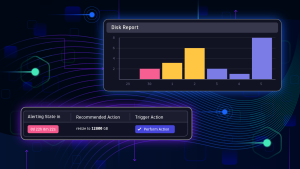A key objective of the Australian Prudential Regulation Authority (APRA) is to ensure that APRA-regulated organisations remain resilient to operational risk. APRA outlines the measures that banks, mortgage lenders, and insurance organisations should take to keep critical promises to depositors, policyholders, and superannuation fund members. Those promises include ensuring continuous service and safeguarding personal information.
APRA recently revised Prudential Standard CPS 230, which deals with operational risk management. The new effective date is 1 July 2025. For pre-existing contractual arrangements with service providers, the standard will only apply from the next contract renewal date or 1 July 2026, whichever comes first.
There’s an excellent reason for giving organisations more time to comply, and that’s because compliance takes time. Acting without delay is still vitally important.
Setting aside APRA’s mandate and the heavy fines and penalties of non-compliance – it’s in companies’ best interests to undergo the process of identifying, assessing, and mitigating operational risk within the business. The significant benefits of CPS 230 compliance are:
- Better risk management and a deeper understanding of risk.
- Reduced operational costs by avoiding costly incidents.
- Enhanced customer confidence through excellent service availability.
If your organisation is involved in achieving APRA compliance, you are likely facing the daunting effort of de-risking critical system delivery. Moreover, for banking organisations, there is a good chance some of those systems are outdated. Shoehorning them into an online banking model creates potential difficulties when meeting APRA requirements.
The good news: even for latecomers to the compliance party, compliance is perfectly doable within the timeframe given the right tools and strategies.
Achieving CPS 230 compliance with unified observability
Banks and other APRA-regulated organisations can approach the task of becoming APRA CPS 230 compliant with minimal resistance by applying unified observability to the challenge.
Unified observability is the ability to know how systems and infrastructure are performing based on the data they generate, such as logs, metrics, and traces. In modern cloud environments, every piece of hardware, software, cloud infrastructure component, container, open-source tool, and microservice generates records of every activity. Observability aims to interpret them all in real time. Observability also presents the information in highly consumable ways that enable teams to detect and resolve issues before they impact end users or customers.
Many organisations adopt an observability solution to analyse the significance of events to their operations, making it ideally suited to APRA CPS 230 compliance. However, in highly complex cloud environments, compliance must be ongoing. A compliance checklist is outdated even before the last box is ticked. Here’s how an observability solution like Dynatrace can help you achieve continuous APRA compliance.
Visibility
Organisations should ask themselves the following questions: do we have visibility over our services? How about over our downstream service providers? APRA wants to ensure visibility over these critical elements, and observability is a great way to achieve this. Observability provides banks and other financial institutions with real-time insight into their IT environment, including applications, infrastructure, and network traffic. Observability can also help with flagging the performance of API services to understand whether ecosystem partners are meeting their service-level agreements (SLAs). These capabilities help with identifying and remediating security and performance risks within APRA time constraints.
The important thing to note is that APRA’s mandated 72 hours for reporting risk is plenty of time if teams know where to look. However, too often, the starting point is unclear. Organisations typically waste valuable time discussing and deciding the right strategy for hunting down the problem.
Detecting operational errors by elimination is a surefire way to deplete hours-to-deadline. On the other hand, an observability solution illuminates the source of the problem, giving teams the space – and the data – to properly assess risk without scrambling for answers.
Availability
Observability helps banks meet availability SLAs for mission-critical services. When organisations have visibility across their entire IT environment and can proactively prevent issues, core systems remain available. Thus, the likelihood of a costly operational incident decreases.
Customer confidence
Customer confidence in an organisation’s ability to deliver excellent experiences while keeping personal information safe is at the heart of APRA’s purpose. By demonstrating organisational commitment to operational risk management, banks enhance customer confidence and nurture lifetime loyalty.
Predictive AI can deliver compliance health checks
Now for the clever part. In the past, banks and financial institutions have approached APRA compliance as a checklist, assigning a task force to check items off the list individually. But today’s cloud-based organisations can – and do – change and expand in any direction at any time.
In the cloud world, there are 10x to 100x more potential breaking points than in a traditional banking model. Moreover, the recovery time for when these systems break could be two or three times longer because of the complexity of cloud-native frameworks. The number of people an organisation employs to manage operations doesn’t grow in correlation with increasing breaking points. Therefore, the eyes-on-glass approach to monitoring system health just doesn’t work anymore.
Using predictive AI and automation-enabled platforms enables organisations to “have eyes on” every potential risk in a much more sophisticated way. And when a system breaks, AI-enabled platforms like these find the issue in seconds.
So, instead of wondering if your organisation’s systems are still compliant, unified observability helps you proactively understand when they’re not. In terms of compliance, that’s powerful.
CPS 230 compliance made easy
The pace of change in consumer behaviours and demands has caught many financial services providers by surprise. As a result, many were driven to quickly innovate new customer engagement channels. Amid the unpredictability of new economic patterns, these channels must be predictably available, which is why APRA is enforcing new measures to mitigate operational failure in its revision of CPS 230. At the same time, compliance in a cloud world is a moving target. In these shifting sands, APRA says that organisations must report any operational failure detection within 72 hours, and activate a business continuity plan in 24 hours.
Dynatrace agrees. Whether your organisation operates in Australia, New Zealand, Singapore, India, or elsewhere in the world, resilience is pivotal to your ability to win your customers’ trust and their return business.
To learn more about getting started with unified observability and how to overcome migration challenges, download the free ebook, “5 challenges to achieving observability at scale.





Looking for answers?
Start a new discussion or ask for help in our Q&A forum.
Go to forum